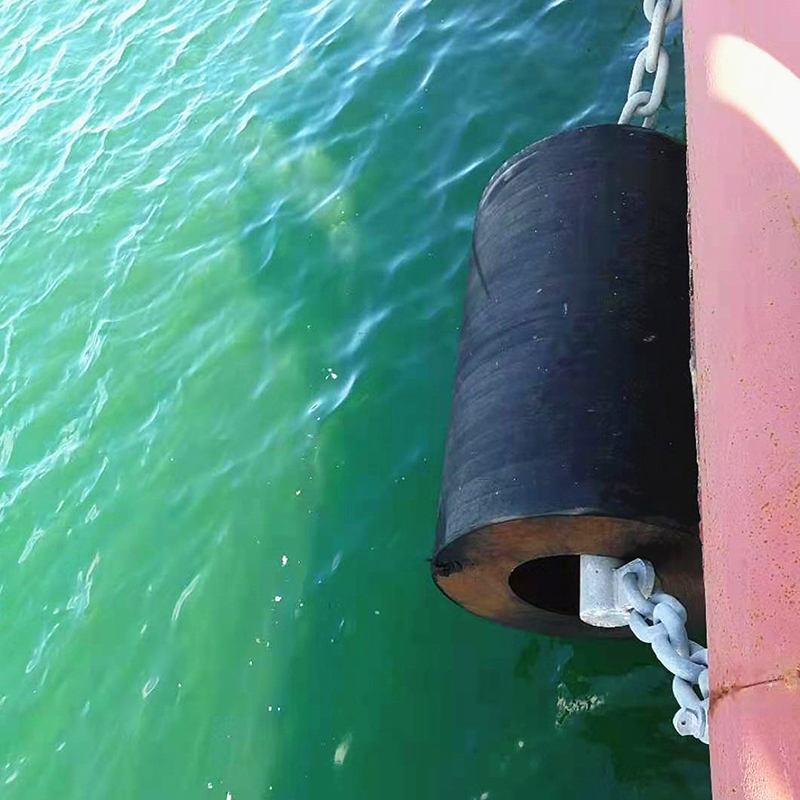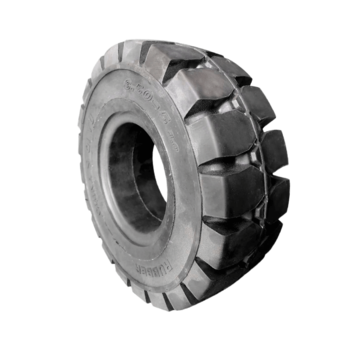Cylindrical rubber fenders are widely used in the marine industry, especially in docking systems and as protective barriers for vessels when moored at ports. Their primary function is to absorb and dissipate the energy generated during ship docking or collision with the quay, ensuring minimal damage to both the vessel and the infrastructure. The performance of these fenders heavily relies on the materials used in their construction. While different materials can be utilized to produce cylindrical rubber fenders, each comes with its distinct advantages and disadvantages, influencing factors such as durability, cost-effectiveness, and environmental impact.

1. Natural Rubber (NR)
Advantages:
High Elasticity and Resilience: Natural rubber, derived from the sap of rubber trees, is known for its elasticity. This makes it highly effective in absorbing energy during impact, which is crucial for fender systems. Its resilience ensures that the cylindrical rubber fender retains its shape after repeated usage, offering long-lasting performance.
Tear Resistance: Natural rubber has a high resistance to tearing, which is essential in harsh environments like marine docking where sharp impacts can occur. This helps in extending the lifespan of the fender.
Cost-Effective: In comparison to synthetic rubbers, natural rubber is generally less expensive, making it an attractive option for cost-conscious projects.
Disadvantages:
Vulnerable to Weathering: One of the major drawbacks of natural rubber is its sensitivity to weathering, especially UV degradation and ozone exposure. Over time, the rubber may crack or harden when exposed to sunlight and harsh environmental conditions, reducing its effectiveness.
Poor Resistance to Oil and Chemicals: Natural rubber is not ideal for environments where exposure to oils, fuels, and other chemicals is frequent. In marine applications, this can be a limiting factor if the fenders are exposed to such substances.
Limited Durability at High Temperatures: Natural rubber tends to lose its flexibility at higher temperatures, which may be problematic in regions with climatic conditions.
2. Synthetic Rubber (SBR, EPDM, NBR)
Advantages:
Weather and Ozone Resistance (EPDM): EPDM (Ethylene Propylene Diene Monomer) is a synthetic rubber known for its resistance to ozone, UV radiation, and weathering. This makes it suitable for marine environments, where the rubber will be exposed to sunlight, saltwater, and fluctuating weather conditions.
Better Oil Resistance (NBR): Nitrile rubber (NBR) is another form of synthetic rubber that offers resistance to oils, fuels, and solvents. This property is particularly beneficial for cylindrical rubber fenders used in industrial or port areas where exposure to oil and chemicals is common.
High Performance at Elevated Temperatures (SBR): Styrene-butadiene rubber (SBR), commonly used in industrial applications, maintains its structural integrity even in high-temperature environments, making it an choice for areas where temperature variations are more.
Disadvantages:
Cost: Synthetic rubbers are generally more expensive than natural rubber. For projects with limited budgets, the cost of synthetic rubbers can be a concern, particularly for larger fender systems where large quantities of material are required.
Lower Elasticity: While synthetic rubbers like SBR are more resilient to harsh conditions, they may not have the same level of elasticity as natural rubber. This can affect the energy absorption efficiency of the cylindrical fender, particularly under repeated impacts.
Environmental Impact: Many synthetic rubbers are derived from petrochemical sources, making them less environmentally friendly compared to natural rubber. The production of synthetic rubber also involves processes that can have higher carbon footprints.
 View More
View More
 View More
View More
 View More
View More
 View More
View More
 View More
View More
 View More
View More
 View More
View More
 View More
View More
 View More
View More
 View More
View More
 View More
View More
 View More
View More